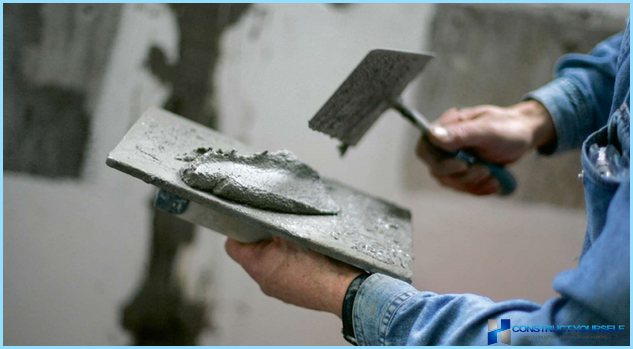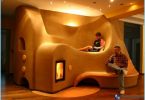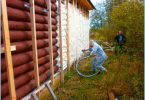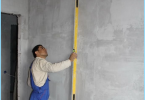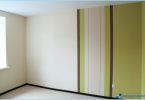The contents
- Preparatory work
- Preparation of plaster
- Apply the first layer – «obryzg»
- Apply the second coat on the wall «the ground»
- Apply a third layer «nalivka»
Applying plaster mixture on the wall without the use of beacons is a very interesting and painstaking work. That work was carried out efficiently, it is necessary to clearly follow the basic rules and requirements for surface preparation for plaster, as well as the choice of construction materials. The only way to bring perfectly smooth walls regardless of the quadrature of the premises and the type.
Apply the plaster without beacons ↑
Comparing the cost of works for teams working with beacons and without the method of applying the plaster without beacons is more expensive. This is because the use of beacons is a definite reference point for work that affects not only the quality but also on speed.
The alignment of the walls beacons may be relevant to those premises that do not require a perfectly smooth surface of the walls: in garages, in the country, in the backrooms. Or for plastering walls made of plasterboard, because these surfaces originally smooth.
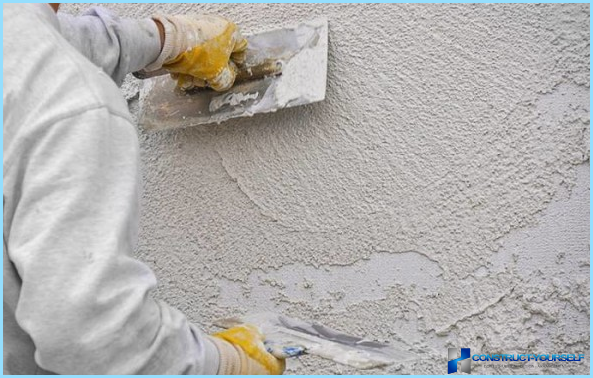
Technology plaster walls ↑
Activities related to application of plaster mixtures without beacons always dusty, very dirty, require special attention and skills. Therefore, their implementation often hire a team of professionals. The cost of the plaster depends on the amount of work and the shape of the surface.
If the budget for the works is very limited, do not despair. Align the wall without beacons quite possible with their hands. The main thing is to adhere to the basic rules and recommendations of professionals, do not rush and do everything carefully, you can also learn a few lessons in our article.
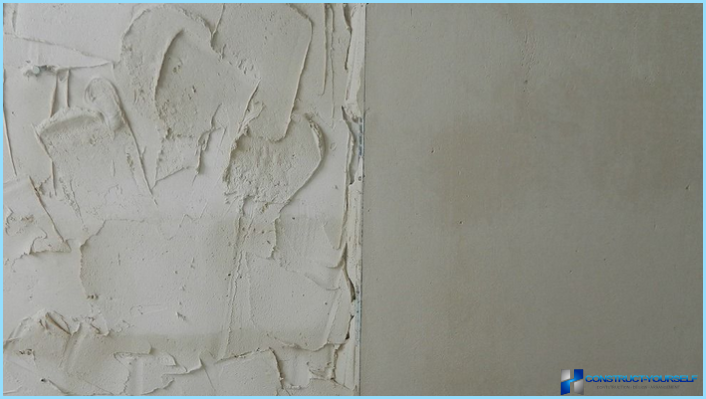
Preparatory work ↑
The first thing you need to do is carefully remove all the old fittings and walls. The walls need to be cleaned to the bottom and dry well.
If the wall is a masonry, for the best coupling with a plaster the joints between the bricks to deepen by 1-2 cm.
On smooth concrete surfaces it is necessary to make incisions. For this you will need a hammer and a file. Notches should be sufficiently frequent to a depth of not less than 2 mm.
For wooden surfaces it is necessary to mount the sheathing. For this purpose, a special thin fillets, or scraps of plywood. Material stuffed on a wall diagonally.
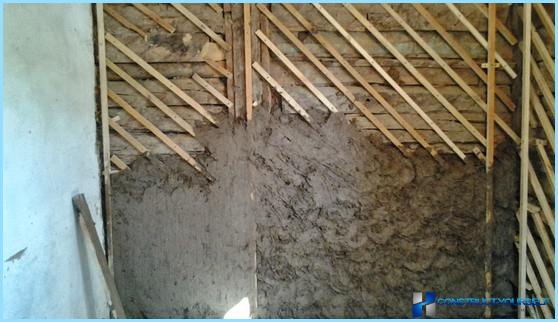
Walls cleaned from dust and dirt. A brick or wood wall surfaces should be wetted with water. For these purposes it is very convenient to use a garden sprayer or just use a broom.
The walls are made of concrete a mandatory process primer. If the walls are made of aerated concrete or sand-lime brick, it is necessary to use a primer of higher penetration. All further work on the plastering of mortar should be carried out after the wall is completely dry.
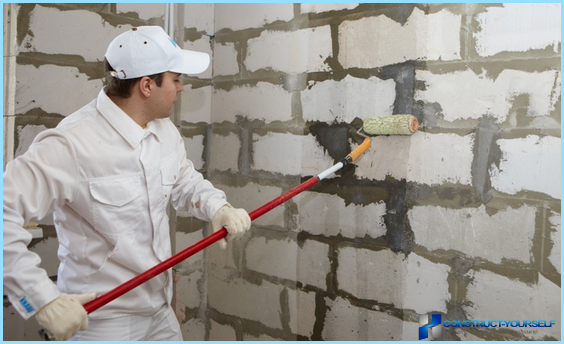
Preparation of plaster ↑
If the plaster is not drawn up from the individual components, and used ready-made dry mixtures, it is necessary to strictly follow the manufacturer’s instructions. As an example, you can consider cooking the most popular plasters Rotband. For a bag of dry mix weight of 30 kg, it is necessary to prepare 18 liters of warm water.
In any convenient container and fill with water, then fall asleep seven trowels dry mixture. All mix thoroughly and then fill up the rest of the plaster, and again mix everything together with the construction of the mixer. You need to do everything possible to ready the plaster was obtained. Leave the prepared composition to stand for 4-6 minutes and then mix again.
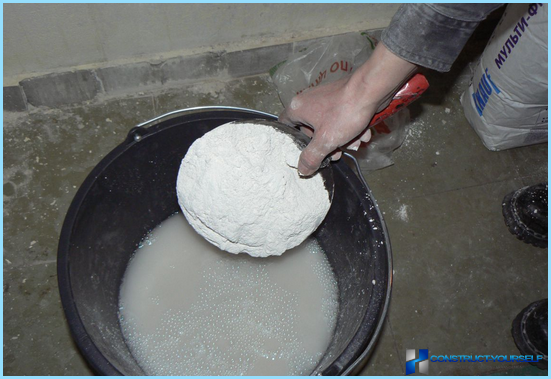
After preparation of the solution, begin applying the plaster to the wall without the use of beacons. The technological process involves the application of several layers after each other.
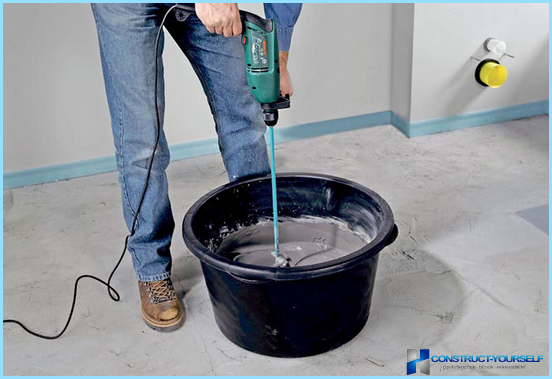
Apply the first layer – «obryzg» ↑
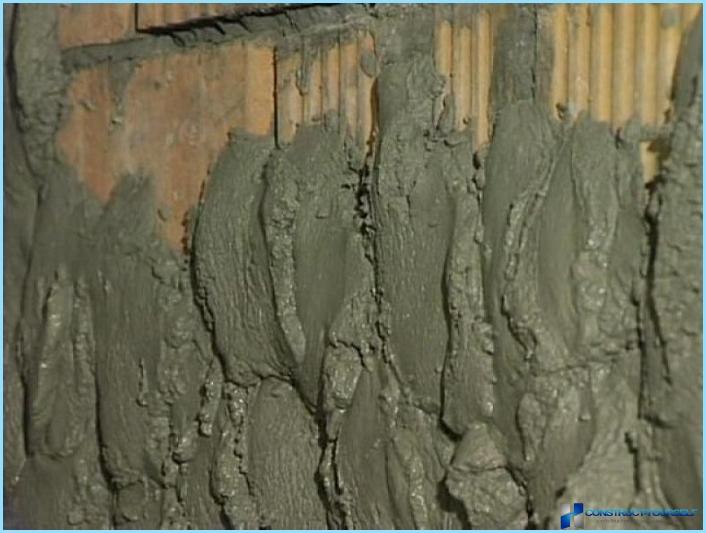
In order to apply the first coat, the plaster must have the consistency slightly thicker than cream. Layer a scratch coat to brick or stone walls is about 5 mm to -10 mm tree.
Recruited to the trowel the plaster and making the mixture on the wall surface in random order. Jumping is only possible with a brush, but in any case not the entire hand. The solution was not sprayed in all directions swing don’t need to do very large.
Also when applying the first layer uses a method called «smearing». Capacity next to the wall, the trowel is typed in, ready plaster and evenly smeared on the wall. After the solution is deposited on the surface, there’s no need to carefully align. It is only necessary to remove the bulging areas of plaster.
Tip! After the work is completed and the selected section of the wall is plastered, you should be very careful to wash all tools.
Apply the second coat on the wall «the ground» ↑
The second stage of the plaster without beacons is the application layer called «the ground». To do this, prepare a special dough-like plaster. To start work only after the first layer of plaster has dried well. Readiness check the following: a finger presses the plaster surface and if it does not change its form, the layer is completely dry.
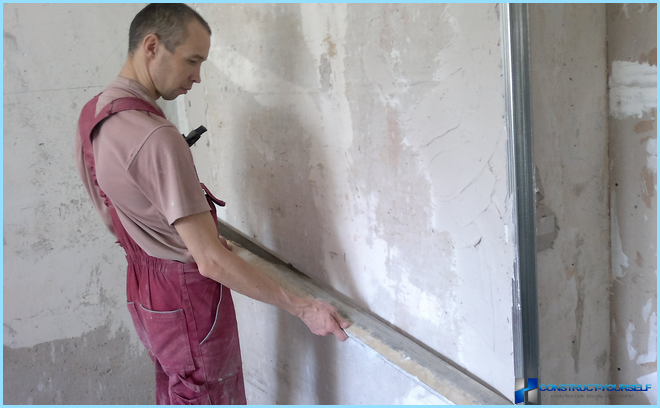
Plaster mix is to throw on the wall, trying as best they can to patch up blank areas. Then plaster is spread with a rule ranging from floors to ceiling. The excess is then removed. If the alignment appear empty lots, they must then fill in the remaining solution and again smoothed out rule.
The finish smoothness is adjusted by a special tool – trowel. It moves along the surface in vertical and horizontal direction.
Apply a third layer «nalivka» ↑
In order to apply the third final layer of plaster on the wall, it is necessary to prepare a solution, which in its consistency resembles sour cream. The third layer is designed to remove even the most minor flaws that may remain after application of the previous two layers. The thickness of the plaster is not more than 2 mm. in order For the mixture to have the best coupling with the surface, it must be properly diluted. For this purpose all the dry ingredients sifted through a fine sieve and thoroughly mixed with water until complete disappearance of lumps.
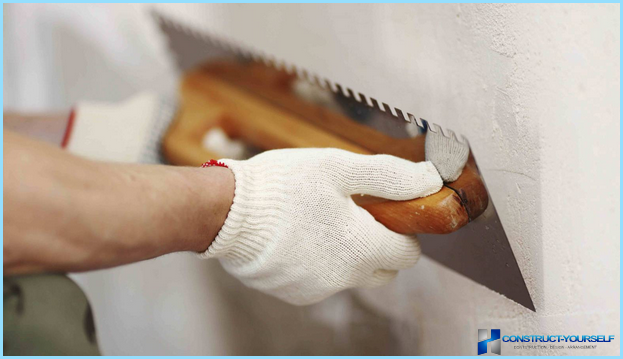
Already plastered the wall wetted with water. Trowel apply a very thin layer of plaster. Rule carefully spread with plaster by a circular or wavy movements. Compaction is performed without waiting for complete drying of the wall.
The better wall plastering ↑
To align the surface of the inner walls of the house without the use of beacons, it is best to use lime, lime-clay or lime-cement mixtures. If the walls are wooden, the solution is to add a bit of gypsum.
For external walls it is best to use lime or lime-cement mortars. Repair of the walls already plastered earlier, is carried out using cement mixtures.
Lime plaster is very easy to prepare. On one bucket of lime mixture take five buckets of sand. Sand should be added gradually to avoid lumps, and could at any time check the quality of ready plaster.
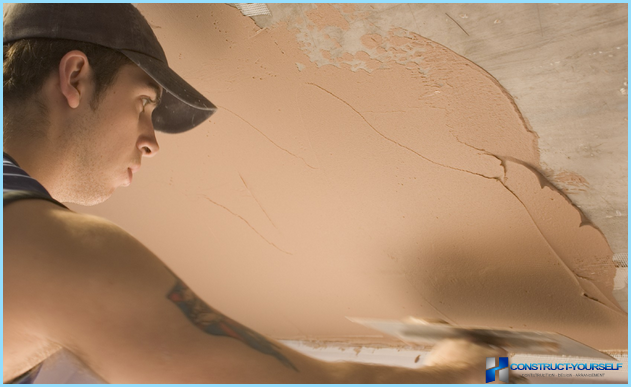
In order to prepare a lime-clay plaster you have to mix one bucket of cement and three buckets of lime paste and add six buckets of sand. If the mixture is very thick, it can be a little hydrating.
Cement plaster is used for finishing external walls of the building, is prepared as follows: one bucket of cement mixed with five buckets of sand, and adding a little water, mix to a soft dough.
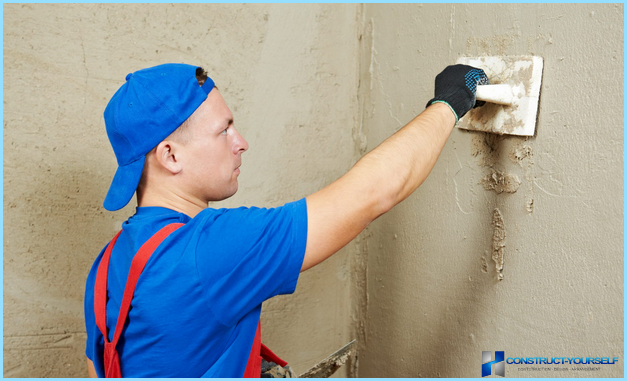
Conclusion ↑
Plastering without the use of beacons experts recommend to apply only for non-residential outbuildings. Because this method helps to achieve significant savings of cash and time, while maintaining a sufficiently high quality finished surface.
Before you prepare the plaster is very important to choose a good quality dry mix. What rules should guide the choice of plaster mix find out in the next video

